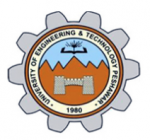1Department of Mechatronics Engineering, National University of Sciences and Technology, H-12, Islamabad, Pakistan; 2National Centre of Robotics and Automation (NCRA), Rawalpindi, Pakistan.
*Correspondence: Nasir Rashid, Department of Mechatronics Engineering, National University of Sciences and Technology, H-12, Islamabad, Pakistan; Email: n.rashid@ceme.nust.edu.pk
ABSTRACT
Brain Computer Interface (BCI) facilitates the user to regulate the peripheral devices with electroencephalogram (EEG) signals. These signals are recorded from the surface of the brain called the scalp. The acquired EEG signals are further processed using feature extraction approach and finally classified into movements using classification techniques. This research article mainly focuses on classification of motor movements recorded in the form of EEG signals of four limb movements. The database used in this study has already ben been utilized by the researchers earlier with different combinations of classification techniques based of feature extraction. The dataset has been recorded at Graz University of Technology, Austria and used for BCI competition 2008. Dataset comprises of EEG signals of four independent limb movements. These four movements represent feet movement, tongue movement, right hand and left-hand movements. In past researches, technique based on Cepstral analysis is applied primarily in area of speech recognition, mechanical parts analysis, seismological issues etc. Efficacy of EEG brain signal classification, using cepstral analysis-based features is discovered in this study. Mel-Frequency Cepstral Coefficients (MFCCs) is employed as a technique of extracting features from EEG signals. Features classification is performed on various classifiers and compared on the basis of their mean percentage accuracy achieved. Variants of support vector machine (SVM) have been used for classification of four movements. Significant improvement in results has been exhibited by quadratic multiclass SVM (Q-mSVM) in terms of classification accuracy. The technique shows average accuracy percentage of 78.48% and maximum accuracy of 88.19% for one of the subjects. The proposed method has shown superior experimental results as compared to the previous studies using the same dataset for calculating multi-class classification accuracy.
To share on other social networks, click on any
share button. What are these?




